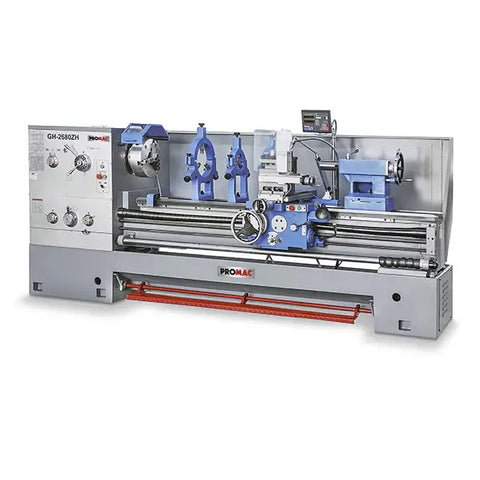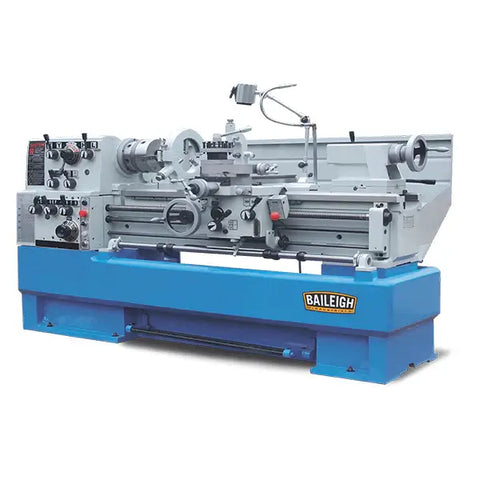
Understanding How Lathes Are Classified
In this article, we will explore the classification of lathes, providing you with a comprehensive understanding of how these versatile machines are categorized. Lathes play a crucial role in various industries, and knowing the different types and functionalities they offer is essential for making informed decisions when selecting a lathe that suits your specific needs.
By examining the various classifications of lathes, including their types, functional classifications, and industry-specific categorizations, you will gain valuable insights into the world of lathe machines.

Key Takeaways:
- Understanding the classification of lathes is important for selecting the right machine.
- Lathes can be classified based on their types, functional capabilities, and industry-specific requirements.
- Some common types of lathes include engine lathes, CNC lathes, turret lathes, and wood lathes.
- Functional classification considers the specific machining tasks a lathe can perform, such as turning, facing, threading, and drilling.
- Industry-specific classifications help identify lathes designed for automotive, metalworking, aerospace, and other unique industry requirements.
Types of Lathes
In this section, we will delve into the different types of lathes available. Understanding the various types of lathes is crucial for anyone looking to invest in a lathe for their specific needs. Let's explore the key characteristics and applications of each type:
1. Engine Lathes
Engine lathes are the most common type of lathe used in workshops and manufacturing industries. They are versatile machines that offer a wide range of machining capabilities. Engine lathes are manually operated and perfect for turning, facing, and threading operations.
2. CNC Lathes
CNC (Computer Numerical Control) lathes are revolutionizing the machining industry. These automated lathes are controlled by a computer program, allowing for precise and complex operations. CNC lathes are ideal for high-volume production, as they offer speed, accuracy, and repeatability.
3. Turret Lathes
Turret lathes, also known as capstan lathes, are designed for quick and efficient production of small to medium-sized workpieces. They feature multiple tooling stations, allowing for rapid tool changes and reducing setup time. Turret lathes are commonly used in mass production environments.
4. Wood Lathes
Wood lathes are specifically designed for woodworking applications. These lathes are used to shape and turn wooden objects such as bowls, furniture legs, and decorative items. Wood lathes typically have variable speed controls and specialized features for working with various wood types.
By understanding the different types of lathes and their specific applications, you can choose the most suitable lathe for your machining needs. Whether you're a metalworker, woodworker, or involved in mass production, there is a lathe designed to enhance your productivity and precision.

Functional Classification of Lathes
In this section, we will explore the functional classification of lathes. When it comes to understanding lathe classification systems, it is essential to consider the specific functions that different lathe models can perform. The functional capabilities of a lathe determine its suitability for various machining tasks, such as turning, facing, threading, and drilling. By gaining insight into the different functions that lathes offer, you can make informed decisions and choose the most appropriate lathe machine for your specific needs.
Turning
One of the primary functions of a lathe is turning, which involves rotating the workpiece against a cutting tool. This process is used to create cylindrical shapes, tapering, and contouring. Lathes designed specifically for turning are known as engine lathes, and they are widely used in manufacturing industries for applications such as metalworking and woodworking.
Facing
Another important function of lathes is facing, where the cutting tool is positioned perpendicular to the workpiece's axis to create a flat surface. This is commonly used in applications where precise flatness is required, such as when mounting bearings or creating parallel surfaces.
Threading
Threading is the process of creating screw threads on a workpiece. Lathes equipped with threading capabilities allow for precise and accurate thread creation, which is essential in applications such as the production of screws, bolts, and nuts.
Drilling
In addition to turning, facing, and threading, some lathes also offer drilling capabilities. These lathes allow users to drill holes of various sizes and depths into the workpiece. Drilling lathes are commonly used in industries such as metalworking, aerospace, and automotive, where the creation of precision holes is critical.
Understanding the functional classification of lathes is key to finding the right lathe machine classification for your machining needs. By considering the specific functions required for your projects, you can narrow down your options and select a lathe that will provide optimal results.
| Functional Classification | Main Function | Common Applications |
|---|---|---|
| Turning | Rotating the workpiece against a cutting tool | Metalworking, woodworking |
| Facing | Creating a flat surface perpendicular to the workpiece's axis | Bearing mounting, creating parallel surfaces |
| Threading | Creating screw threads on a workpiece | Screw production, bolt and nut manufacturing |
| Drilling | Allowing users to drill holes on the workpiece | Metalworking, aerospace, automotive |
Industry-Specific Classification
When it comes to lathes, different industries have specific requirements and unique machining needs. As a result, lathes are classified based on the industries they serve, allowing professionals to choose the most suitable lathe for their specific applications.
Automotive Lathes
Automotive lathes play a vital role in the production and repair of automobile components. These lathes are designed to handle the demanding nature of automotive machining, ensuring precision and efficiency. They are capable of various operations, including turning crankshafts, brake drums, and camshafts.

Metalworking Lathes
Metalworking lathes are widely used in industries such as construction, manufacturing, and engineering. These lathes are specifically designed to work with metal materials, offering versatile capabilities like turning, threading, drilling, and facing. Metalworking lathes come in different sizes and configurations to accommodate various metal machining tasks.
Aerospace Lathes
Aerospace lathes meet the stringent requirements of the aerospace industry, where precision and reliability are paramount. These lathes are equipped with advanced features and technologies to handle the complex machining needs of aerospace components. From turbine shafts to aircraft landing gear, aerospace lathes are instrumental in producing high-quality aerospace parts.
| Industry | Examples of Lathe Types |
|---|---|
| Automotive | Engine lathes, CNC lathes |
| Metalworking | Turret lathes, CNC lathes |
| Aerospace | CNC lathes, multi-spindle lathes |
By understanding the industry-specific classifications of lathes, professionals can make informed decisions when selecting a lathe for their particular application. Whether it's the automotive, metalworking, or aerospace industry, having the right lathe ensures efficient and precise machining operations.
Conclusion
In conclusion, understanding how lathes are classified is crucial for making informed decisions when selecting a lathe. By familiarising yourself with the different types, functional classifications, and industry-specific categorizations, you can choose a lathe that aligns with your specific requirements and achieves optimal machining results. Whether you're a professional in the automotive industry or a hobbyist woodworker, having a solid understanding of lathe classification will empower you to make the right choice.
By exploring the classification of lathes, you gain insights into the distinctive features and applications of each type. Engine lathes, CNC lathes, turret lathes, and wood lathes offer unique capabilities that cater to various machining needs. Additionally, understanding the functional capabilities of lathes in operations like turning, facing, threading, and drilling helps in identifying the most effective lathe for specific tasks.
Lathes also have industry-specific classifications, with different sectors requiring specialized features to meet their unique machining demands. In industries such as automotive, metalworking, and aerospace, specific lathe models are designed to address the challenges and intricacies of these fields. By considering industry-specific classifications, you can ensure that your lathe is equipped to fulfill the precise requirements of your chosen industry.

